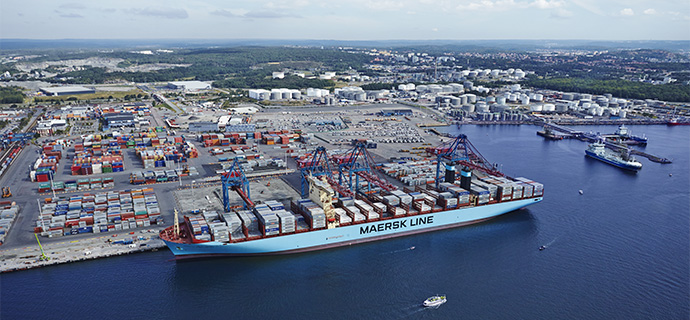Modelling moored vessel response in the Port of Gothenburg

Photo © Port of Gothenburg
On her way to her designated berth at the Port of Gothenburg for the first time, the Majestic Maersk – the world’s largest container vessel – was scheduled to pass another berth close to the navigational channel. Other vessels could be moored at this berth and it was necessary to understand what impact such a passing could have on these vessels. We modelled the response of a moored vessel to the passing of a large ship such as the Majestic Maersk. Subsequently, on the evening of 30 September 2013, the Majestic Maersk arrived successfully at the Port of Gothenburg.
When a ship moves through the water, a system of waves is typically generated by the ship’s hull. Short period wake waves arise as a consequence of pressure differences along the hull, whereas the acceleration of the flow under and around the hull induces a long-period displacement wave. At the bow of the vessel an increase in pressure produces a local increase in surface elevation. Along the sides of the vessel, higher flow velocities lead to a decrease in surface elevation. At the vessel’s stern, the velocities decrease again, resulting in an increase in surface elevation. These changes in water elevation give rise to the displacement wave. The lower surface elevation along the sides of the vessel is called the drawdown and is governed by the speed and displacement of the vessel, as well as the geometry of the channel.
Displacement waves can become quite pronounced in rivers, canals and navigation channels. Among other things, they can cause vessels moored nearby to move, putting additional strain on their mooring lines. Large moored vessels, though relatively insensitive to the short-period wake waves, can be vulnerable to motion caused by the long-period displacement wave.
Using state-of-the-art software, we can model the waves produced by a large passing vessel and the resulting forces in the mooring lines of the moored vessel.
Read more